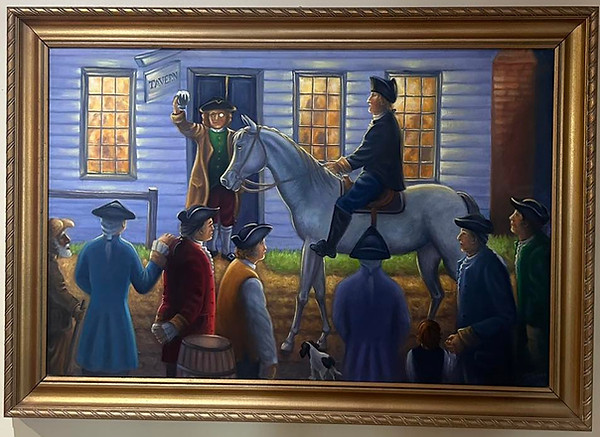




The Stamp Act
Let’s travel back in time to 1763 when the French and Indian War ended with the Treaty of Paris. The victory of the war left England with new territory west of the Appalachian Mountains, but also left England with an immense war debt and increased administration burdens. These new debts caused the British Parliament to impose taxes to pay back that debt, on the American Colonies, better known as the Stamp Act of 1765 (March 22nd, 1765). This is where the statement “No taxation without representation” came from.
The Stamp Act wasn’t taken well in the colonies and caused quite an uproar. So much so that boycotts began in the colonies. On February 27th, 1766 a group of men from Essex gathered here at the then Emerson’s Ordinary to be led by Meriwether Smith (picture 1) to travel to Brays Church in Leedstown, Westmoreland by river ferry for the first result of the boycotts. The Leedstown Resolutions (picture 2) which was drafting 6 resolutions stating allegiance to England, but publicly stating their grievances with the Crown. This was one of the earliest documents in America.
Action was the second result. Merchants saw some financial benefits to cooperating with the act and the Patriots knew that having the merchants against their views could weaken their argument. 400 men, calling themselves the Sons of Liberty, gathered once again at Emerson’s Ordinary (1710 Tavern) on February 28th, 1766, and compelled Archibald Ritchie, a wealthy Scottish merchant, of the Ritchie House (picture 3, now Dillard and Katona) to sign a public apology for his stance on the Stamp Act and covert to the Sons of Liberty’s side. They also convinced another Scotch merchant of Tappahannock, Archibald McCall to convert sides after 400 men tarred and feathered him at his residence (picture 4 now Brockenbrough House - St. Margaret’s).
With both major merchants of Tappahannock on the Patriot’s side, the boycotts held and England repelled the act on March 18th, 1766. These actions happened 7 years before the Boston Tea Party which is associated with the Patriot group, the Sons of Liberty. The Tavern was once a major meeting place for our town and holds a rich history within its walls. You can see the first two pictures in the bar area of the tavern. For more information on the great history of our town and the tavern please visit the Essex County Museum or their website!
